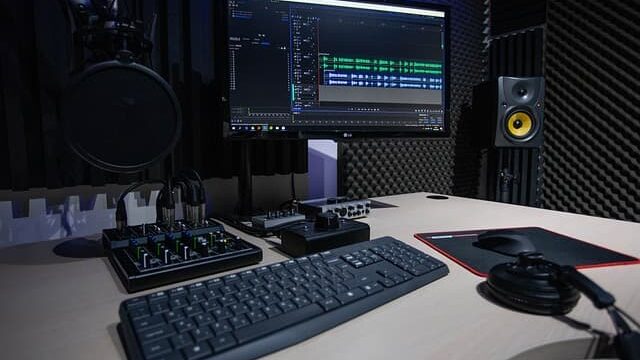Interviewing is a purposeful conversation between an interviewer and a respondent to obtain sociological information.
Interviewing is a time-consuming and expensive survey technique. It should be used when it is necessary to obtain an in-depth understanding of the subject of research or of the respondent’s inner world. The use of interviewing is appropriate for a limited and small sample of respondents, such as expert interviews or telephone surveys. Interviewing is preferable when interviewing children, the elderly and the poorly educated. Young children can be interviewed only with the consent of older relatives. It is not recommended to interview persons you know, because acquaintances, trying to appear better or embarrassed, may give distorted information. During the interview it is better to address the adult respondent by name and patronymic)’. You should not start an interview on one day and end it on another.
In most cases, interviewing plays the role of an auxiliary means of obtaining information, allowing to specify or supplement the information that was obtained in the course of the questionnaire. In this regard, a distinction is made between exploratory and control interviewing. Reconnaissance interviewing is usually carried out in order to find out which questions are appropriate to include in the questionnaire.) The control interview allows you to expand or adjust the information obtained through the questionnaire.
In contrast to the questionnaire interview, the researcher has the opportunity to clarify the respondent’s answers to questions, as well as in the course of the interview, if necessary, to ask questions that were not planned in advance. If the respondent does not understand the meaning of the question, the interviewer can clarify the wording, ask a clarifying or leading question. The method of interviewing makes it possible to avoid unanswered questions, as well as to interview those who are not able to fill out the questionnaire independently.
Interviewing can be face-to-face – when the interviewer directly talks to the respondent, or in absentia – when a telephone survey is conducted. Face-to-face interview should be conducted without the participation of unauthorized persons who may distract or embarrass the respondent. It is not recommended to conduct interviews in the workplace; it is better to use a neutral room where nothing will distract the respondent from the conversation with the interviewer. The place and time of the interview should be agreed upon with the respondent in advance. Interviewing in a home environment is less formal and allows the respondent to feel more comfortable and to be more open. Correspondence interview by telephone should not exceed 15-20 minutes, and questions and answers should be short and concise.
A distinction is made between free (“clinical”) and standardized (formalized) interviews. Free interview is conducted according to a thought-out’ plan, but without a pre-prepared questionnaire. As a rule, the topic of the interview and its main directions are determined. During a standardized interview the interviewer is obliged to adhere strictly to the order of questions prepared in advance. An interview that focuses on only one particular issue is called a focused interview. Interviewing can be either individual or group. An individual interview seeks the personal opinions of each respondent. In a group interview, the researcher seeks the overall opinion of the group about the issue being discussed.
Conducting interviews involves selecting and training interviewers. The interviewer must be competent, literate, sociable, friendly, tolerant, polite and tactful. It is desirable that the interviewer has oratorical ability, adjusting the pace of his speech to the pace of the respondent.
The interviewer’s responsibilities include:
- to follow the instructions clearly,
- to observe the timing of the interview,
- inform the respondent about the purpose of the research being conducted,
- to arouse the respondent’s trust and desire for a frank conversation,
- to interest the interlocutor in giving answers to the questions asked,
- be able to formulate questions accurately and competently,
- be persistent within acceptable ethical limits,
- not make remarks about the interlocutor’s erroneous judgments,
- Do not coerce the respondent to answer unwanted questions,
- not to impose one’s opinion or desired answer on the respondent,
- to guarantee the confidentiality of the information obtained.
At the end of the interview you need to thank the respondent for their cooperation and assistance in the research.
Sociologists have noted that women do best as interviewers. They are easier than men to enter into direct contact, and they are more trusted by respondents. Young interviewers, because of their extremism, and older interviewers, because of their conservatism, find it more difficult to enter into a dialogue with a respondent, especially if they belong to the opposite age groups. In addition, the age difference reduces the trustworthiness of the answers.
It is most convenient to conduct interviews in pairs: one asks the questions and the other records the answers. However, psychologically, the presence of a third person makes the respondent wary and reduces the level of trust in the conversation. Also, recording the interview using technical means (dictaphone or tape recorder, movie camera or video camera) can be restraining and alarming to the respondent. Recording the interview by technical means should be done only with the respondent’s permission.
Recording information during the interview can be done by recording the answers in the interview record or notebook, as well as by technical means. Answers to closed questions can be recorded by symbols, while answers to open questions should be recorded verbatim. The interview protocol indicates the topic of the study, the time and place of the interview, as well as the general impression of the respondent. The record ends with the date of its completion and the interviewer’s signature.
